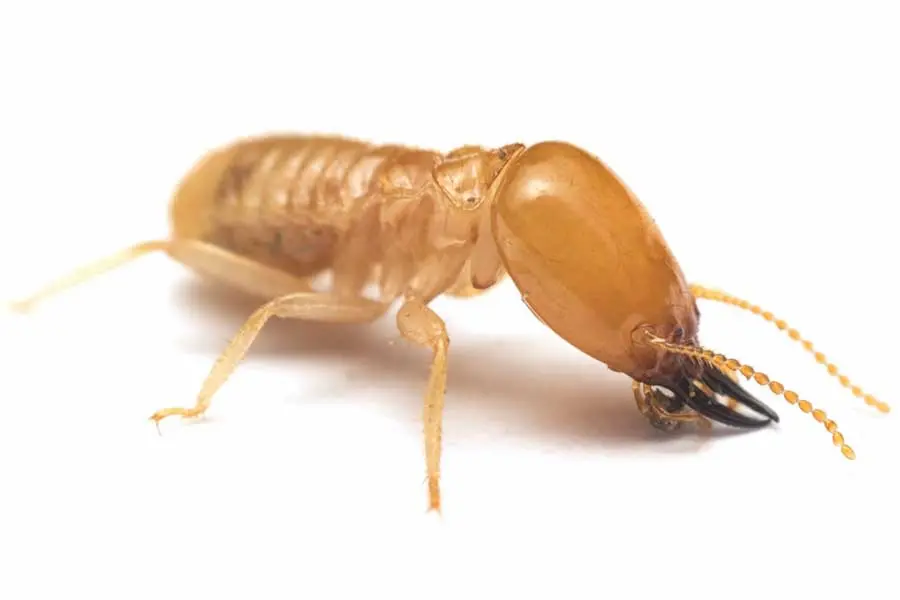
Termites and carpenter ants share some similarities, such as their winged reproductive phase and attraction to wood. However, carpenter ants only infest moist or rotting wood, while termites damage even healthy wood by turning it into powder. Unlike carpenter ants, termites can silently cause extensive damage over time, often going unnoticed until it’s too late. Carpenter ants are a nuisance, but they don’t compare to the severe economic impact termites have, causing billions in damage annually.
Catching termites early means you can stop them before they do more harm. You’ll know it’s a termite if you notice:
- Size: Termites range in size from ¼ to ½ inch long.
- Color: They vary in color from off-white to dark brown.
- Wings: If it’s a swarmer, it will have wings.
- Adult Features: Adult termites have six legs and straight antennae.
- Body Structure: The termite’s body is divided into three parts: the head, thorax, and abdomen.
Termite Appearance
While these general characteristics apply to all termites, their wood-eating behavior can vary based on specific traits. Different species may target different types of wood or behave in unique ways. You don’t need to identify the exact type of termite; however, when our exterminator arrives, they’ll focus on the termite’s color, size, and caste.
Color and Size
Dampwood Termites are typically larger and reddish, while Drywood Termites tend to be yellow-brown with transparent wings. Subterranean Termites are usually off-white or dark brown. Identifying these color and size differences can help determine the best course of action for treatment.
Caste
A termite’s caste determines its appearance. Workers are mostly off-white with a creamy tone, while soldiers are notable for their large heads and powerful mandibles. Alates, or swarmers, are the winged reproductive termites that shed their wings once they establish a colony. Each caste plays a specific role in the colony, contributing to its overall survival and growth.
How to Spot Termites Near Your Home
Despite all the information shared, you’ll likely be disappointed to know that termites rarely crawl along the walls inside your home. They usually remain hidden within the structure itself, making them difficult to detect. As a result, spotting termites is more about identifying the damage they cause. Look for signs such as hollowed-out wood, mud tubes, or discarded wings. If you suspect termite damage, contact Griffin Pest Solutions to ensure you’re protected.
Contact our specialists in Michigan’s Lower Peninsula for professional termite treatment to protect your home from further harm.
Back to Termite Identification